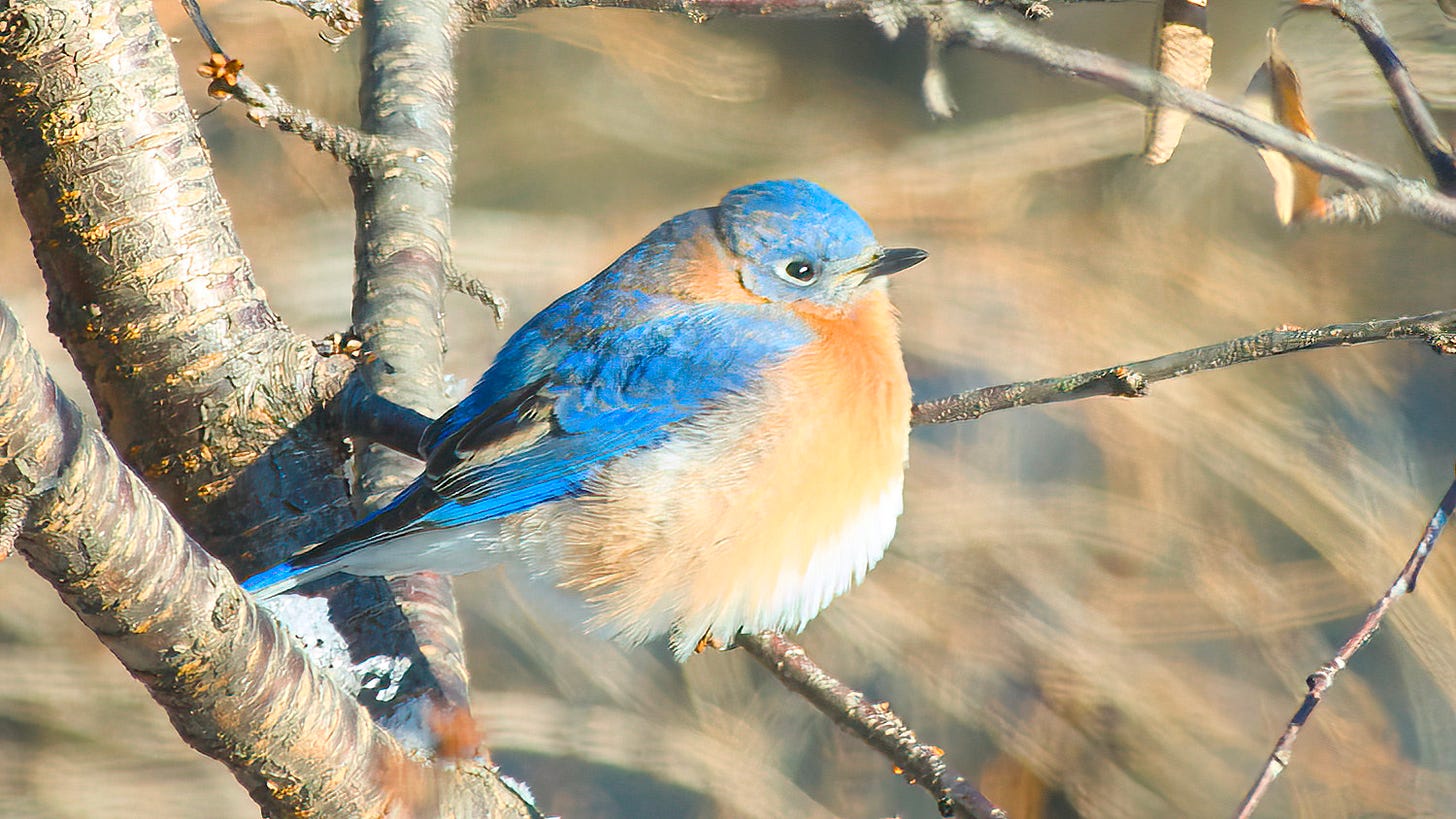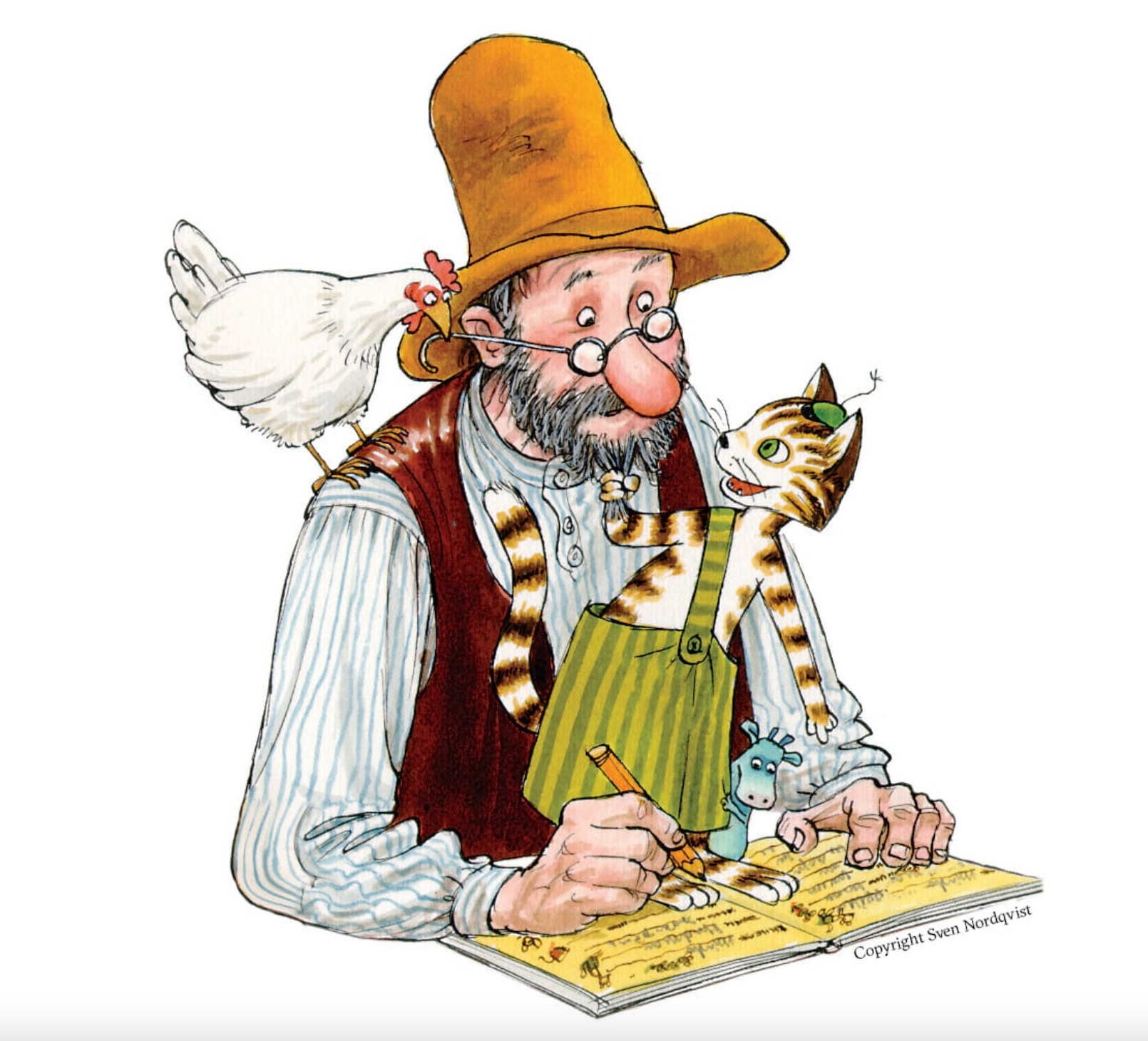Being originally a Brit, and hence quite easily overcome with embarrassment by self promotion, I somewhat dithered about sharing a line that was emailed to me after last week’s installment by a reader. However, I have lived in Canada long enough now to know that sometimes it is OK to blow your own trumpet. Although I had not put it into words, what he said is pretty much what I had been hoping my readers would find here and I hope very much that others will agree. Thanks Tim:
“I always look forward to your posts. Practical urban ecology that's courteous and literate.”
Much wildlifing at this time of the year happens while looking from the heated side of a window pane and primarily involves birds and trees. Whether in the garden or out on the trail, it’s remarkable what you can see in a cold Quebec winter. Here is something delightfully unexpected for the season.
We are now a couple of weeks into the new year and I am assuming that a number of readers are already keeping a new bird list for the year. You are, aren’t you? If not, it’s not too late … grab a notebook or install eBird (https://ebird.org/home) on your phone and make a start - with a hot drink in one hand and starting by concentrating on the birds in your garden. You get to do this from the warmth of indoors. Know that this is one way in which all of us can contribute via “citizen science” to collecting the data needed to keep birds thriving around us.
Eastern Bluebirds
Be like the bluebird who never is blue, For he knows from his upbringing what singing can do
Cole Porter
One’s instincts are to associate Eastern Bluebirds with spring and summer, and it is true that these are the periods of the year when we are most likely to see them. But … they are hardier than you might think. Twice now on the route J and I run as part of the Hudson Christmas Bird Count (CBC) we have briefly encountered small groups in the week following Christmas when, as we all know, warmth is not a feature of the environment. Most recently, the 2023 CBC produced a grouping of four or five Bluebirds accompanied by at last one Cedar Waxwing. Better yet, in mid-January of 2020 a half dozen birds arrived in the garden. The temperatures were frigid, around -15C when “poof” there they were siting in the bare branches of a Viburnum bush outside the sunroom window … the camera was to hand and the two pictures above are proof of their presence. On the other side of the garden there were still some clusters of frozen red berries on a Rowan tree which they soon discovered and started to eat. They stuck around for a while, well fluffed up against the cold, before heading off southwards. A rare treat from the birding gods - and then, blow me down, they briefly repeated the exercise the next day before departing for ever. Like a lot of small birds, they are tougher than we think, being able to withstand severe cold so long as there is food for them, ideally high energy foods such as fruits and suet blocks if made available at feeders.
Bluebirds breeding around here, winter in the southeastern United States and Mexico, but their year-round range, like that of a number of other species, has been shifting toward the northwards and resident populations can now be encountered as far north as parts of New England - not so far south of Montreal.
So, should you encounter some of these marvellous birds at this time of year count your lucky stars and don’t disbelieve your eyes. I am sure they visited us on their late travel southwards because they found food easily available on our trees and feeders and shelter in the bushes we grow. It’s unlikely they would be attracted to traditional lawned gardens, especially when there is snow, but you never know. At least keep those feeders well supplied.
In the fifty or years from around 1920 there was a marked drop in the bluebird population due to loss of habitat, pesticide use, climate changes, removal of dead trees with cavities they can nest in amongst other reasons, the most pronounced of which being the presence of non-native birds such as House Sparrows and European Starlings. Both of these are cavity nesters, and out-compete Bluebirds for essential nesting cavities. In Canada, the species was assessed as rare by the Committee on the Status of Endangered Wildlife in Canada (COSEWIC) in 1984. About forty years ago a concerned conservationists started to erect artificial nesting boxes optimized in design for Bluebirds as supplementary nesting cavities, with the remarkable result that the population rebounded and stabilized and they are no longer considered to be endangered. A conservation success story.
The bluebird was helped in its recovery because people knew about it. While we may never have a civil society dedicated to the eastern hog-nosed snake or lakeside daisy, there are many Canadian species that need our help now. All species have their own stories that we need to know and share — their quirky habits, unique life cycles and increasing their fight for survival in the world that is rapidly changing. We can’t build houses for all of them, but we can help protect their homes. The recovery story of the eastern bluebird is important because it changes the narrative of our human relationship with other species. We can be destroyers of nature; a force that creates a less diverse and homogenized natural world. But we can also be restorers of nature, creating a richness and abundance of life.
Nature Conservancy of Canada
Mary Azarian’s etching - gardening in winter
Last week I wrote about using the cold winter months to plan for the gardening season ahead and jokingly added a cartoon I had unearthed. J wondered why I had not shared an etching that we have hanging in our front hall. It’s by a wonderful artist and rural gardener, who lives not very far south of us, just across the border in northern Vermont. We first met Mary Azarian when we were over from England, touring the morris dance in that part of the world back in 1987 … though that’s a story for another day, I think.
An addendum to last week’s post
Wildlife Gardening: This extract is quoted from an article linked to below. I think it rounds off nicely some of what I shared with readers a week ago. To me this makes perfect sense, and lowers stress levels a little:
One thing we very much can control is whether to introduce non-native plants and what to do about those we already have growing on the property. My original intention was to eliminate everything non-native as quickly as possible, and perhaps their elimination can remain a far-off goal, but I’ve learned that being a purist has its own drawbacks. For example, should I remove a mature non-native tree in favor of a native sapling that will take decades to store the same amount of carbon, provide other ecological services, and perhaps many years even to bear a significant amount of fruit and flowers to support native birds and insects? If I order a pure native and inadvertently receive a native cultivar, should I throw the latter away even as ecologists debate the relative benefits of one or the other on the environment?
I’ve concluded, to paraphrase Thoreau, that a foolish consistency may indeed be the hobgoblin of small minds. For instance, once one has removed plants or plantings that may have taken years to get established, they’re gone forever. So I’ve decided not to be too religious about these things in practice, while I continue to allow them to drive me a little crazy with each individual decision.
A new venture … simply, I am posting in a parallel Substack, a picture a day, something that has caught my eye while walking around. Minimal text, maybe two sentences at most. Usually something seen “this day” or the day before, always seen this date. I usually share the posts on “the socials” as someone called them recently, but as usual, if you click the subscribe button you will get the pictures delivered to you mid-morning in time for that important cup of tea or coffee that bridges the time between breakfast and luncheon.
This is for fun - A Ginger Cat
I was going to stop there, but …
… but then I happened across this. It speaks to me and it may do you, too:
Enthusiasm is the power source for your curiosity. It’s how you care long enough to get somewhere good and learn something new (and maybe even learn something amazing). It’s a self-renewing resource (the more you nerd out, the more you want to nerd out) and in Thoreau’s words it’s a “supernatural serenity” that will plaster a smile over your face for the rest of the day. And, of course, it’s a really fantastic way to annoy your enemies. That too.
Above all, it’s a choice. We don’t get to choose what life throws at us - but we do get to pick what parts of life we throw ourselves at.
Mike Sowden










Thanks for the shout out. One day perhaps I’ll write about our bluebirds!